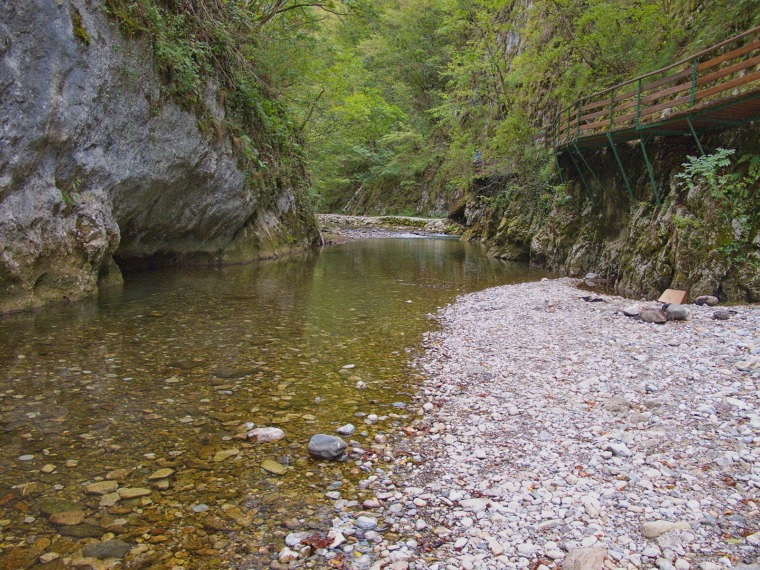

In times when women’s roles were very different than the ones today, and when their freedom upon which they could act was significantly reduced, they were the strongest and bravest among many other men and women as they stood out and thus left their mark in Serbia’s history. They were first among the people who set standards in literature, painting, medicine, journalism, science, aviation, diplomacy but also in warfare. We present to you: The prominent women of Serbia!
Helen of Anjou (Jelena Anžujska), founder of the first Serbian school for women and the first Serbian queen who became a saint
Helen of Anjou was the queen consort, a wife of the Serbian king Stephen Uroš I who reigned from 1243 until 1276 and the mother of the kings Dragutin and Milutin. Her palace was on the rims of today’s Kosovo in a place called Brnjak (or Brnjaci as well). There Helen founded the First women’s school in Serbia where girls were taught the hand craftsmanship, and after finishing their education, queen provided them with a dowry as an incentive. It was the first specialized school not only in Serbia, but in the whole Europe.
Legend says that three years after her death she appeared in one monk’s dream, so when they opened her tomb, her body was found whole and preserved “like in dew”. Since that 1317 she is celebrated as a saint in Gregorian calendar. Her first hagiography was written by a chronicler, the Serbian Archbishop Danilo II making it the first hagiography of a Serbian queen consort who was canonized.
The nun Jefimija (Jelena Mrnjavčević), first Serbian female literate
JelenaMrnjavčević (around 1350-1405) was the daughter of the respectable noble emperor Vojihna and the spouse of despot Uglješsa, a cousin of tzarDušan. When despot died in a Battle of Maritsa in 1371, as a cousin of princess Milica, Jelena came to the palace of Prince Lazar. She became a nun and took the name Jefimija, under which she is known as the first Serbian female poet. It is believed that Jefimija helped princess Milica in running the state affairs in times of Milica’s reign after the Battle of Kosovo, and that she affected greatly the Milica’s children’s education.
In Serbian literature Jefimija remained known for the three literary works: Lament for the Infant Uglješa, Encomium of Prince Lazar, and Praying to the Lord Jesus Christ. Thanks to the materials in which they are preserved, these works are also standing as the monuments of applied arts as well. Her works were contrived as gifts for the Hilandar and Ravanica monasteries.
Princess Milica Hrebeljanović – first Serbian female diplomat
Princess Milica Hrebeljanović (born around 1335, lived until 1405) was the wife of Serbian prince Lazar, and a saint in Orthodox Church (Venerable Evgenija). Milica bore the lineage of Nemanjićs. Her father was prince Vratko, in national folklore known as Jug Bogdan.
When her husband died in 1389 in the Battle of Kosovo, Milica ran the state and its people, since her sons were still underage. Princess Milica dabbled in diplomacy as well, so she went to the sultan Bayezid with the nun Jefimija in 1398, to represent her son Stefan’s interests. She managed to achieve the translation of relics of Saint Petka from Vidin to Belgrade. She founded Ljubostinja monastery where she met the end of her days.
Katarina Ivanović, first female painter and female academic
Katarina Ivanović was born in 1811 in Vesprim, Hungary, as a part of the family of merchant and a construction foreman Lazar Ivanović. When she was only 14 she wanted to be a fresco painter. She attended school in Pešta under the wing of the best Hungarian painter at the time, Jozef Peški, so she truly became the first Serbian female painter.
“I hope that Serbs will pay the respects to my paintings, and hold me in their regard”, wrote Katarina after the first installment of eight paintings came into the National Museum few months earlier.
Marija Maga Magazinović, first modern ballerina and the first female reporter
Marija Maga Magazinović was born in Užice in 1882. Even though she dedicated herself completely to modern art dance, she ventured in journalism at the same time as well. She submitted to “Politika newspapers” articles about rhythmicity and plastic as forms of body and mind education of the youth. For the full forty years Maga Magazinović was a professor of philosophy, German and Serbian language in the First Gymnasium for women. She wrote an autobiography “One Life”which was published in full in a book “My Life”.
Draga Ljočić, first Serbian female doctor
Draga Ljočić (born in 1885), was the first female doctor. She was born in the family of merchants. Since she never got the license needed for working in the state hospital, she had to open up her own private practice. She was even forced to take a special exam afterwards, under the board of prominent doctors of that time, even though he had a diploma from Zurich and Geneva, and a specialization in Ophthalmology. Draga joined the army as a field nurse during the Balkan and World war in order to take care of the wounded.
Mileva Marić Einstein, the first Serbian female mathematician and the world class scientist
Mileva Marić Einstein (1875-1948) was the first Serbian female mathematician and Albert Einstein’s first wife, one of the most genial men of 20th century. In the summer of 1896 she started her medicine studies in the University of Zurich. In October she transferred to the State Polytechnics School pursuing the mathematics and physics studies, and was only the fifth woman to be accepted to this school. In 1903 she married Albert Einstein, physicist and one of the greatest minds in the world. Their marriage failed, and many claim that she contributed to his earlier works, but the degree of that contribution in his discoveries is still unknown and a topic of many polemicists.
MilunkaSavić, first female bomber
Milunka Savić was born in 1892 in a village Koprivnica near Raška. She was a Sergeant in the Second Regiment and a true Serbian heroine of the Balkan wars and WWI. She was wounded in battles nine times. In Balkan wars (1912, 1913) she fought as a volunteer, dressed as a man, until hospital staff didn’t discover her sex after the wounding in Battle of Bregalnica, almost a year after her deployment to Serbian army. In WWI she distinguished herself from other comrades as a bomber in Battle of Kolubara. She was awarded many Serbian and allies’ medals: two medals Karađorđe Star with swords, Miloš Obilić medals for bravery, two French Legion of Honor medals, French Croix de Guerre, Russian Cross of St George, British medal of the Most distinguished Order of St Michael, Albanian Retreat medal, and many more.
Jelisaveta Načić, first Serbian female architect
Jelisaveta Načić (1878-1955) was the first female with Bachelor’s degree in architecture in Serbia. She graduated in 1900 from a newly founded Architectural department of Engineering college and so became a part of the first generation of architects educated in Belgrade.
The major part of Jelisaveta’s buildings which she designed is preserved as cultural heritage. She tried herself in urbanism, designed important public and private objects, worked in religious and industrial architecture, and was interested in building economical buildings for collective living of working class.
The most famous work of Jelisaveta Načić is the King Peter I elementary school which she designed on the very beginning of her career. However, her time in architecture was short lived since she was taken to a Nazi concentration camp Nežider in 1916, and after being released she never took up the architecture again.
Danica Tomić, first Serbian female aviator
First female pilot in Serbia was Danica Tomić, who won the “Politika newspapers” competition in 1931, and together with two other girls she has taken the awarded lessons and got her pilot license in 1933.
Ksenija Atanasijević, first female Ph.D.
Ksenija Atanasijević was the first woman to attain the academic title of doctor of philosophy from Belgrade University. In October 1923, Ksenija Atanasijević was elected for a position as a docent of Faculty of Philosophy in History and Classical Philosophy studies. Ksenija faced many obstacles as the only woman on University’s staff list, and she was arrested as well. In the meantime, Britannica Encyclopedia has put into their guidelines her doctoral thesis on Giordano Bruno as a relevant literature for comprehension of Bruno’s thoughts. Based on her complete works, it is thought that Ksenija Atanasijević is the creator of the original and whole philosophical system.









